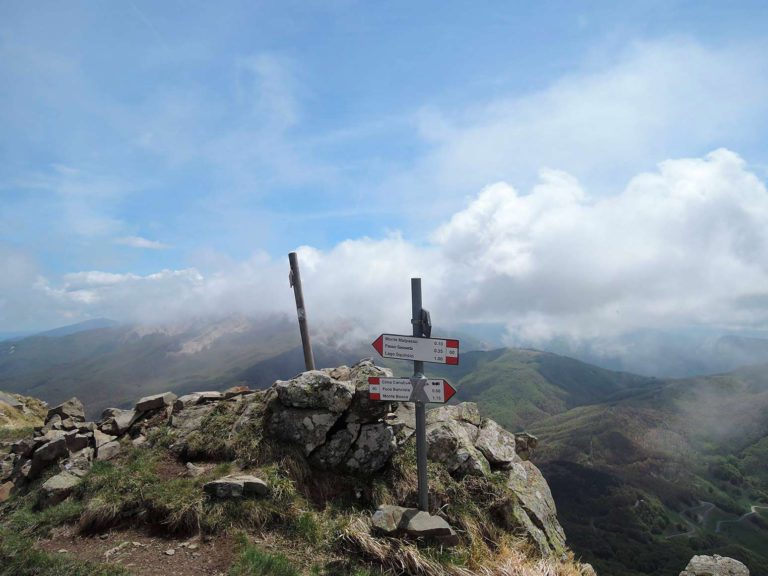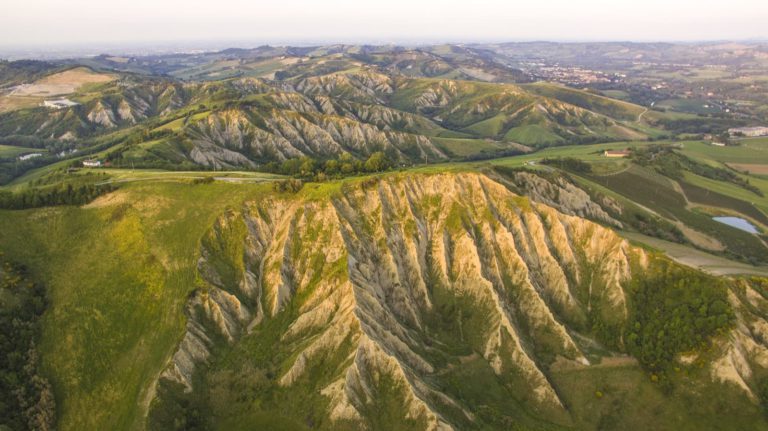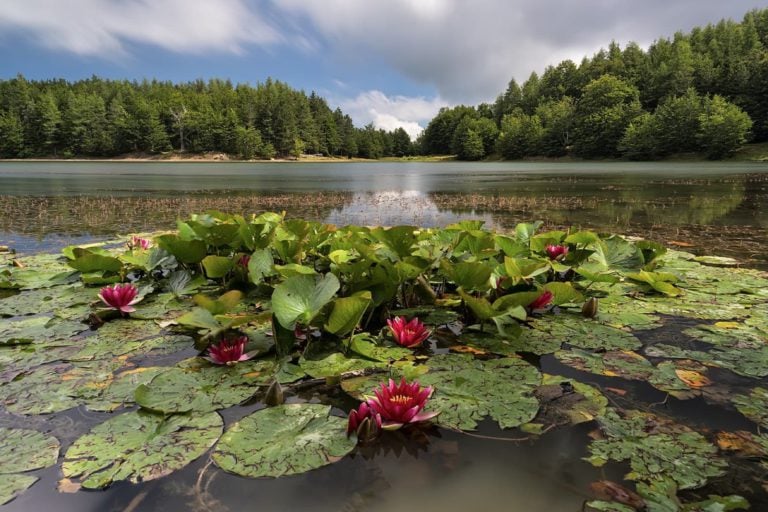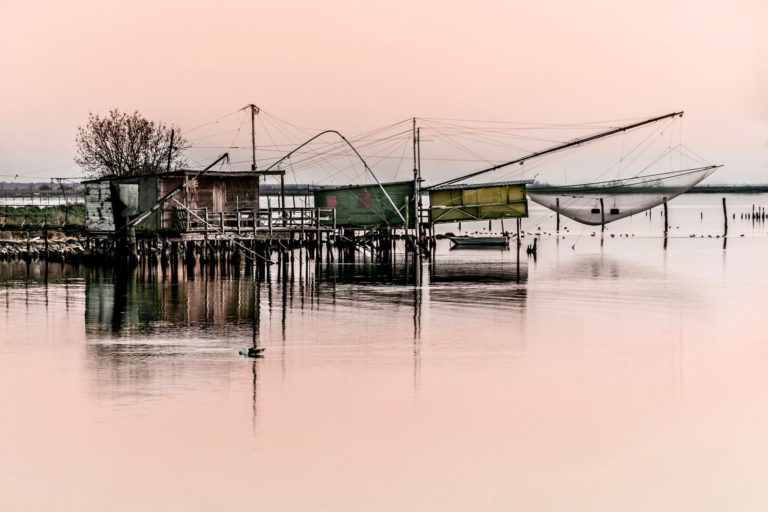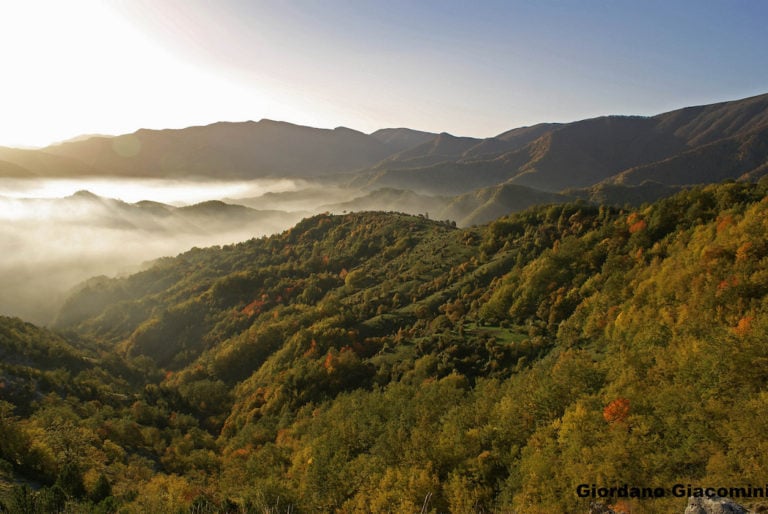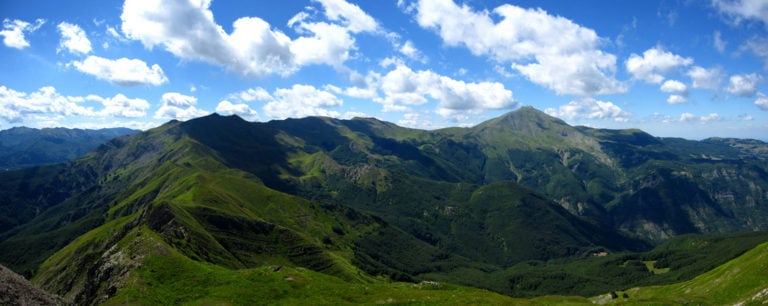The Emilia-Romagna region starts from the mountains and stretches out into the sea, encompassing lakes, nature reserves, rivers, waterfalls and valleys, and is filled with an explosion of colours and emotions.
A great attraction of this landscape is its ever-changing nature, which every day amazes visitors with its spectacular views and varied flora and fauna.
What better time to go on a great hike and discover this stunning land?
Here are 5 nature reserves that will make you fall in love with this amazing region.
THE PO DELTA PARK
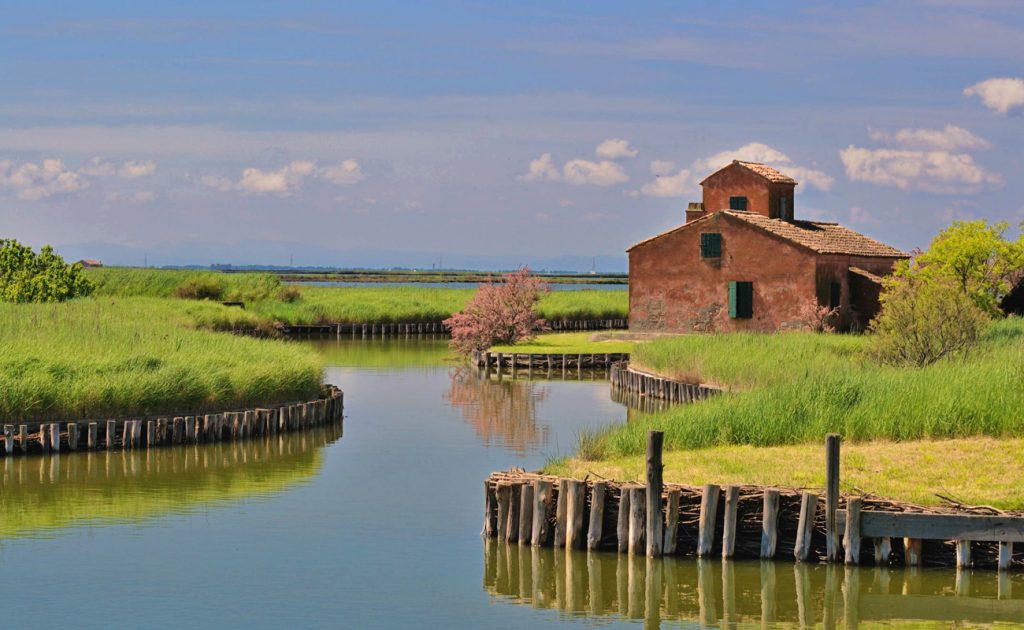
Comacchio Valleys (Ferrara) | Ph. parcodeltadelpo.it
With its 60.000 ha, the Regional Po Delta Park encompasses many areas of interest such as Pomposa, Comacchio and Sant’Apollinare in Classe.
Here you will get the chance to see plants growing in sandy soil and over 250 species of birds, such as the Eurasian spoonbill, the Mediterranean gull, the slender-billed gull, the Sandwich tern, the lesser-crested tern and the marvellous flamingos, which stop here during their migration.
There are also many places worth a visit, such as the Mesola Castle or the Pomposa Abbey.
THE FORESTE CASENTINESI, MONTE FALTERONA, CAMPIGNA NATIONAL PARK
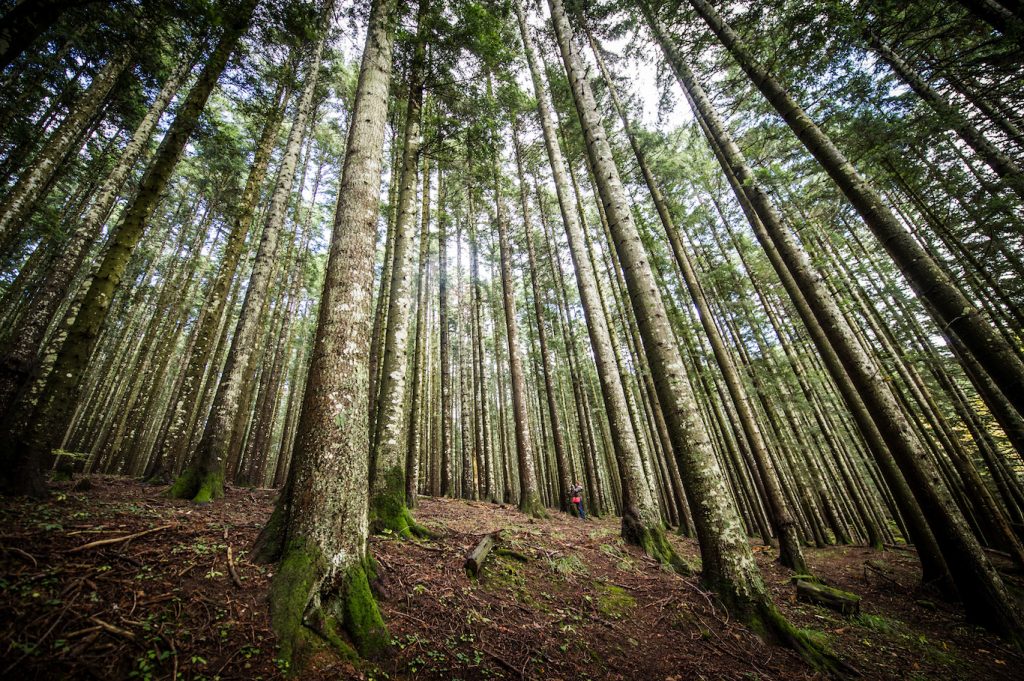
Foreste Casentinesi | Ph. Pixcube.it
The Foreste Casentinesi, Monte Falterona, Campigna National Park extends around the Apennine ridge that divides Emilia-Romagna from Tuscany.
The Park also includes the Montone, Rabbi and Bidente Valleys.
Wander through fir trees, cross creeks and waterfalls, and take in the mystical atmosphere of places like Camaldoli and La Verna, where many renowned religious and intellectual figures found their home.
You can read about these landscapes in the works of great scholars like Dante and Ariosto, and men of deep spirituality like Saint Romuald and Saint Francis of Assisi came here on retreat.
If you are searching for a mystical, stunning place to explore, this is the one for you!
PARCO DEI 100 LAGHI
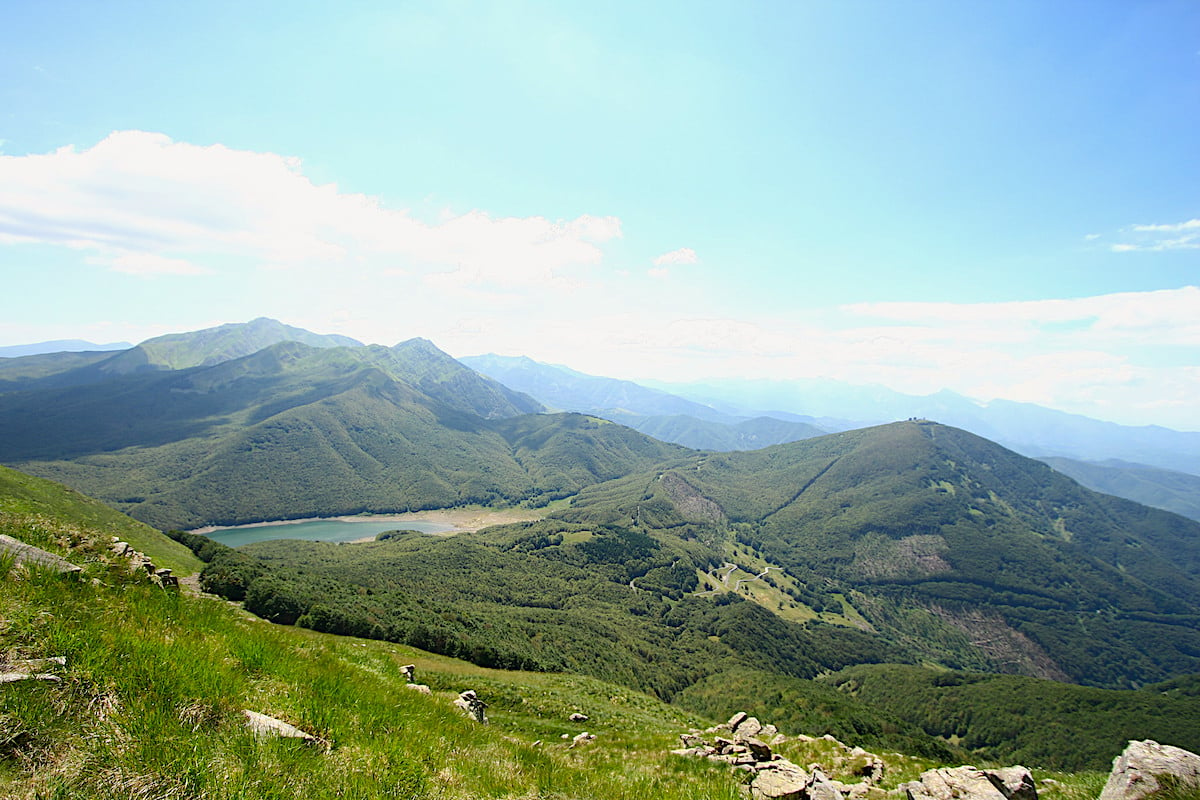
Parco dei Cento Laghi | Pic by Cristian Marchi
The Valli del Cedra e del Parma Regional Park, also known as the Parco dei Cento Laghi (Park of the Hundred Lakes), is a good example of a typical mountain landscape, with forests, picturesque lakes and a wealth of thriving flora and fauna, including silver firs, European spruces, badgers, wolves, otters, deer, foxes, beech martens and the rare white-throated dipper.
The Park also features the route network of the Italian Alpine Club (CAI) and many other places worth a visit, which can all become the starting point for some great hikes!
THE VENA DEL GESSO ROMAGNOLA PARK
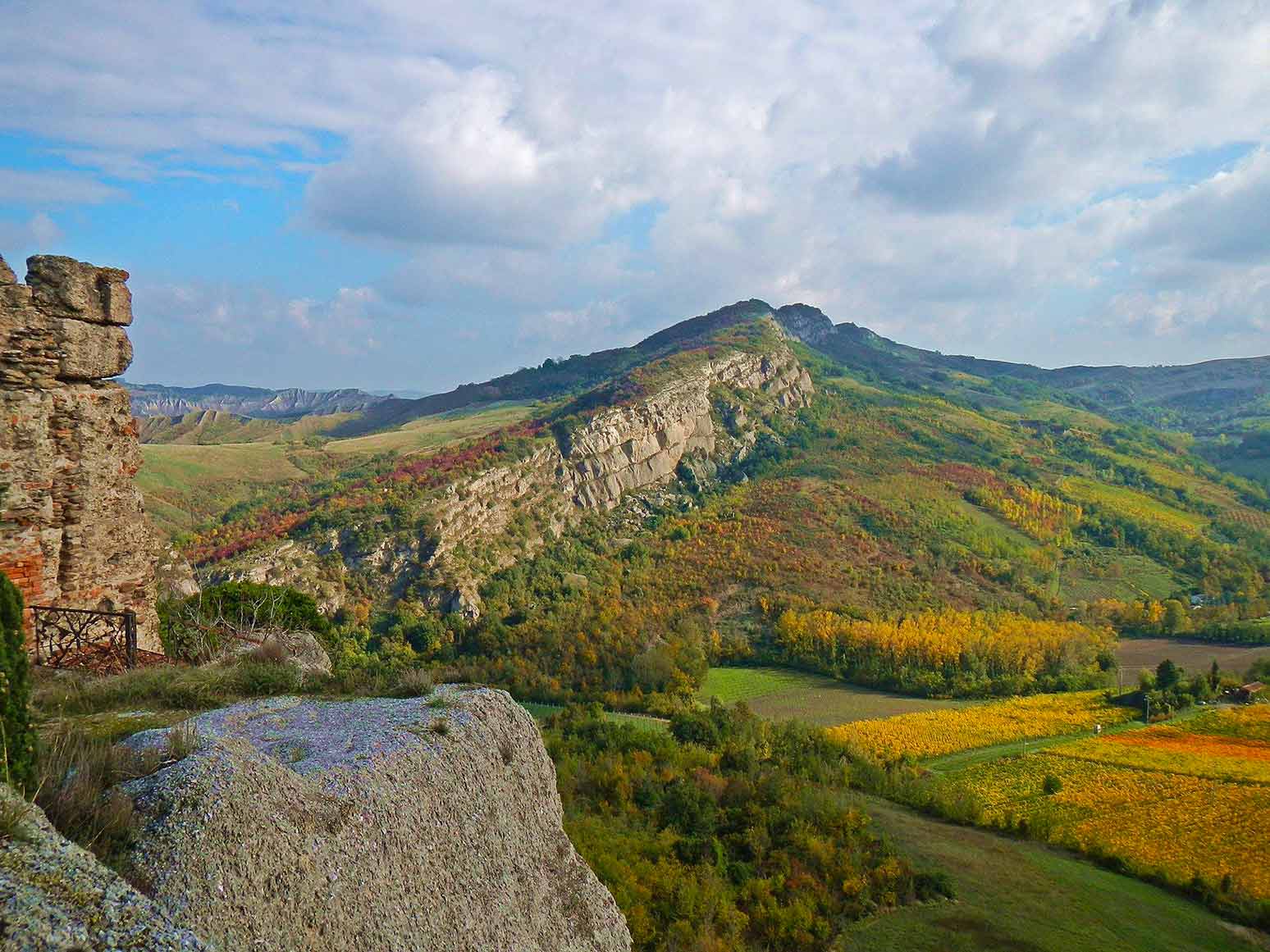
Vena del Gesso Romagnola Park | Ph. Fiorenzo Rossetti.
From the Sillaro Valley to the hamlet of Brisighella, in the Lamone Valley, Romagna’s hills are crossed by a breath-taking, silvery-grey chalky ridge, which is what makes this landscape truly unique and unforgettable. In this area, orchids flourish among shrubs, rocks, junipers and brooms.
Located just south of the Vena del Gesso ridge, Giardino delle erbe di Casola is the most important botanical garden in Europe.
Don’t forget to explore the many caves that riddle this area, where you may spot bats or rare animals like the European cave salamander.
On top of that, the Faenza Civic Museum of Natural Sciences will gladly give you more information about guided tours and events as well as some useful tips.
THE REGIONAL PARK OF THE SUVIANA AND BRASIMONE LAKES
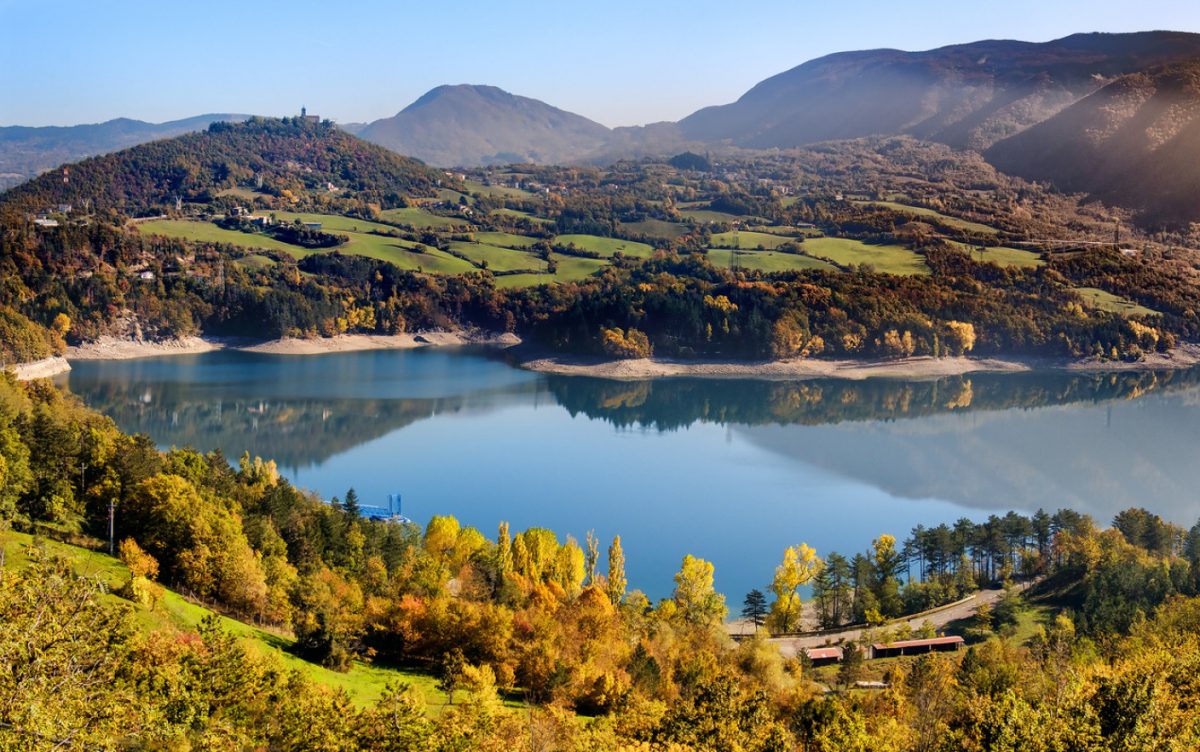
Parco dei Laghi di Suviana e Brasimone | Ph. © consigliamidove.it
The Regional Park of the Suviana and Brasimone Lakes covers 3,329 ha of the Municipalities of Camugnano, Castel di Casio and Castiglione dei Pepoli, in the province of Bologna. This area is also known for two large hydroelectric dams that were built in the early 1900s.
The magnificent Cinghi delle Mogne, composed of sandstones from the upland areas surrounding it, sits amidst mixed forests of oaks, beech trees and conifers. If you are lucky enough, you might even hear the great spotted woodpecker pounding his way into the old trunks of the chestnut trees that grow here.
Author

Elisa Mazzini
Social Media Manager for @inEmiliaRomagna and full-time mom.
You may also like
Hiking Emilia-Romagna: 5 trails you cannot miss
by Walter Manni /// February 24, 2020
Emilia Romagna Slow | 5 hiking trails to enjoy the Spring
by Walter Manni /// March 20, 2018
The Natural Protected Areas of Emilia Romagna
by Elisa Mazzini /// July 13, 2020

Interested in our newsletter?
Every first of the month, an email (in Italian) with selected contents and upcoming events.
The Po Delta Park in Emilia-Romagna
by Giulia Delaini /// April 23, 2018
The Casentinesi forests, Monte Falterona and Campigna National Park
by Walter Manni /// March 26, 2018
